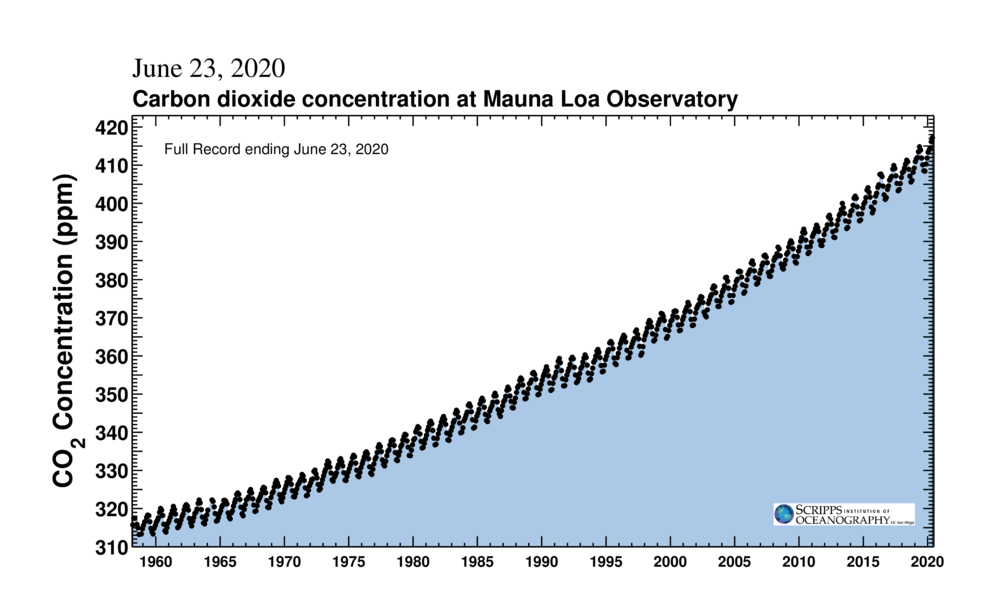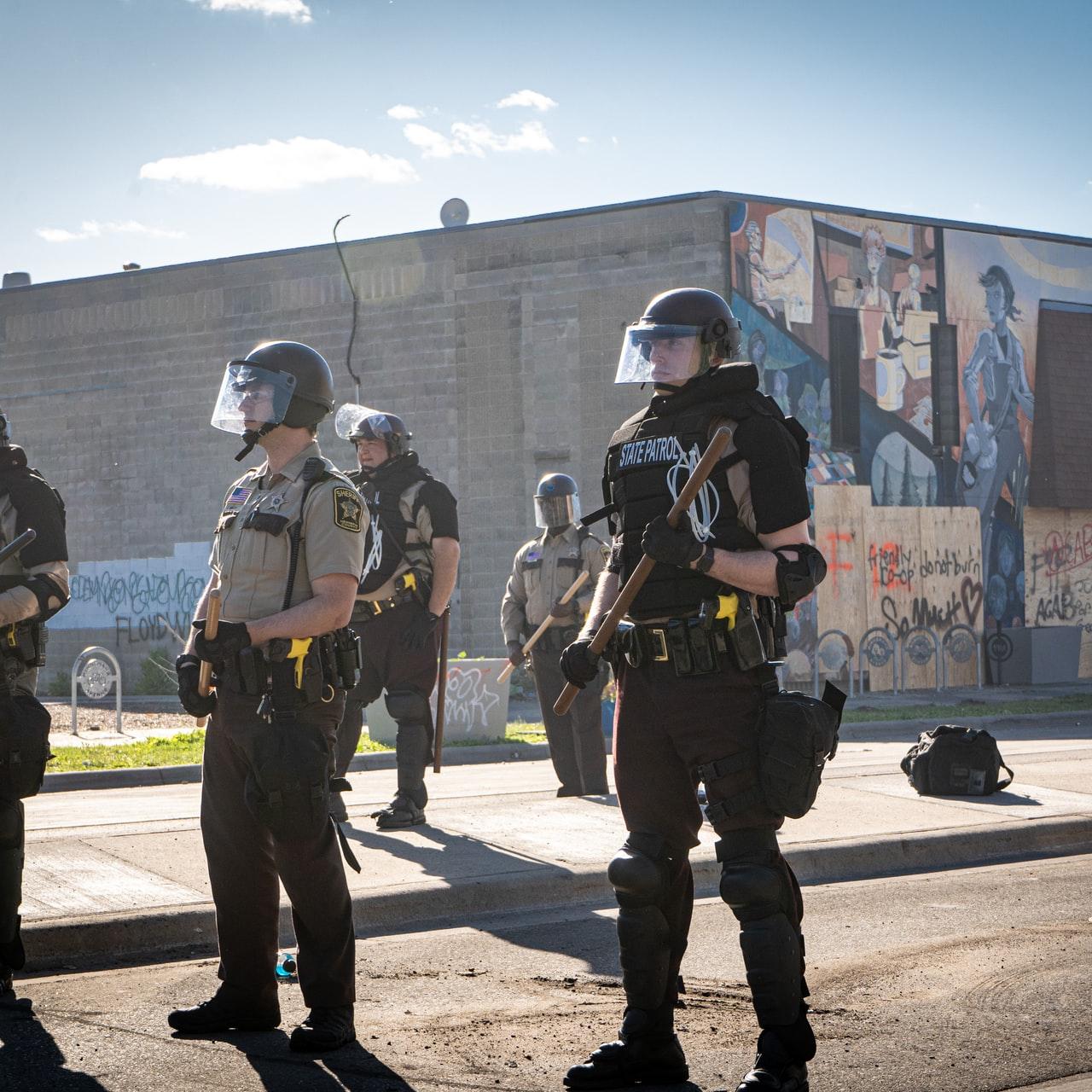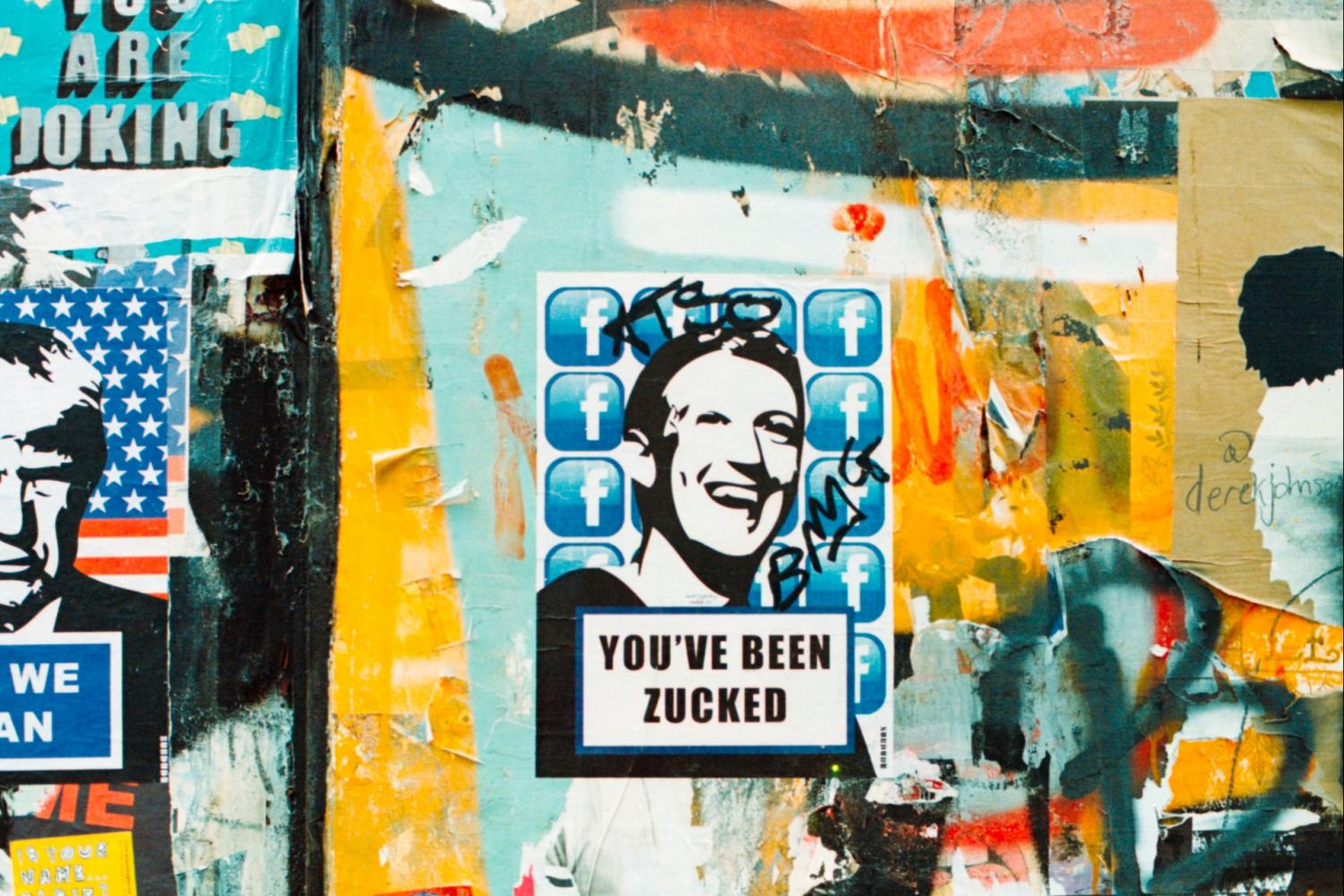How Businesses Can Help Protect Pollinators on Their Own Grounds


In May of 2015, the White House released a National Strategy to protect pollinators. The National Strategy to Promote the Health of Honey Bees and Other Pollinators outlined actions steps for federally managed lands, including expanding pollinator habitats and improving their quality, as well as creating a native seed reserve. The strategy is still intact under the current administration.
Soon after this strategy was published, in 2016 the Wildlife Habitat Council (WHC), a nonprofit group dedicated to preserving and enhancing biodiversity on corporate lands, came out with a white paper directed at companies, Prioritizing Pollinators in Corporate America, encouraging businesses to align with the goals and guidance from the White House.
As this year's National Pollinator Week winds down, now is a good time for businesses to review these recommendations and put them into action. After all, the plight of the honey bee (and the other 200,000 species worldwide that pollinate) is ongoing.
We need to protect the upward trend of pollinators
In 2006, the state of honey bees was troubling. Experts began to notice the effects of colony collapse disorder (CCD), in which worker bees abandon their colonies. Researchers found that a variety of stressors were contributing to this abnormal phenomenon, and farmers began to take action to reduce many of these stressors, like pesticide use.
The United States Department of Agriculture (USDA) noted in a recent blog post that no incidents of CCD have been reported in the past few years. However, the USDA writes, pollinators are at a crossroads. Efforts to reduce stressors like pests, habitat loss and climate variability must continue if we want to ensure pollinators will remain healthy.
Business participation is essential to fulfilling the coordinated national vision that is necessary to protect pollinators, many of which migrate across the continent each year.
Pollinators are vital to American business, especially agriculture. According to a White House Fact Sheet from 2014, pollinators contribute more than $24 billion to the U.S. economy. At least 90 crops grown commercially in North America would be nonviable without the activity of honey bees.
Can brick and mortal businesses support pollination?
The 2015 White House National Strategy focuses on federal land, but also emphasizes the importance of public-private partnerships. The WHC’s white paper delves more deeply into the actions private corporations can take to fit into the strategy.
The paper opens by reiterating the three goals of the National Strategy. First, reduce the loss of honeybee colonies during the winter. Second, increase the Eastern population of the monarch butterfly. Third, restore or enhance 7 million acres of land for pollinators over the next five years. Five years have passed. There is still work to be done.
The steps for businesses are concrete — in some cases they are small-scale — and very manageable. Companies can create pollinator gardens on their grounds. Specific designs and vegetation can attract species of concern like native bees or monarch butterflies. Milkweed, for example, helps monarch populations.
Companies can transform right-of-way (ROW) land, which often lies barren, into pollinator habitats. The WHC writes that ROW land for power lines alone has the potential to become 5 million acres of pollinator-friendly habitat. These medium-sized grounds can become important connectors between fragmented ecosystems. If managed correctly, ROW corridors can support rare bee species and connect otherwise fragmented habitats, thus increasing the populations of butterflies.
Even land requiring remediation can become a pollinator habitat. In coordination with the “green remediation” guidelines published by the U.S. Environmental Protection Agency, the WHC recommends using pollinator-friendly plants, which can save land managers maintenance costs and support the productive reuse of the property.
Of course, education is always an opportunity in the fight to protect pollinators. Businesses can host National Pollinator Week and National Public Lands Day events in their local communities. They can also train their employees and develop various programs with schools or local organizations.
However, a company that chooses to support pollinators and their habitats must inherently be individual. The pollinator gardens companies create will be unique to the land and the local species. Educational initiatives will be specific to the company, its mission and the needs of the community.
This expansion of the private component of protecting and restoring pollinators is essential to the success of the 2015 National Strategy. Company participation can expand local interest and awareness, and of course, habitat. Corporate action not only helps sustain the U.S. food economy; it can also physically and symbolically build the public-private relationships that are essential to fulfilling this national vision.
Image credit: Brian Lewis/Unsplash
Rethinking Clean Energy Jobs During the Time of COVID-19


Carbon emissions temporarily dropped in March and April when the world went on lockdown for COVID-19. By the end of April, emissions had dropped 17 percent compared to 2019 with fewer cars on the road and the reduction of some industrial operations. But in May, countries and states starting opening up again and emissions have shot back up, nearing pre-pandemic levels. At the same time, virtually every sector within the economy has been affected by the pandemic, including the utility sector and clean energy.
Clean energy jobs were among the fastest growing in the country before the pandemic, with 10.4 percent growth from 2014 to 2019. According to the latest numbers, they have also taken a big hit in the past few months: more than 620,000 jobs have been lost in the U.S. alone since March. Further, among those lost jobs, the largest number are in energy efficiency, which were the fastest growing energy sector jobs before the pandemic. That creates several problems to consider when we think about what we need to solve the climate crisis.
Energy efficiency and climate change
Energy efficiency is one of the cheapest, easiest ways to address climate change. Put simply, it means using less energy to complete the same task—that is, using a more efficient technology or process (as opposed to conservation, which includes things like turning off the lights when you leave a room). Significant efficiency advances have been made in the past few years with the result that experts estimate that we could achieve more than half of the emissions reductions needed to tackle climate change with efficiency alone.
Global energy demand has been increasing, but effective efficiency measures allow economies to continue to grow without increasing emissions. And while commercial and residential efficiency has seen an increase in utilization, now that people who can are working from home, it is more important than ever that residential users also are able to and do take advantage of energy efficiency. But that need has also created a conundrum during the pandemic: worker access to public housing, individual residences, and even commercial facilities.
Further, energy efficiency is an effective water conservation tool. Because energy is required to move, treat, and deliver water and water is required to generate electricity, both use significant amounts of the other resource. The water sector in particular is overall energy-inefficient and improved technologies and processes could both reduce energy demand and conserve water. Further, water conservation measures are typically cheaper than many energy efficiency measures to implement.
Energy efficiency, clean energy jobs, and COVID-19
International climate change negotiations have been canceled for the entirety of 2020, but as noted above, climate change has not taken a holiday. We will potentially see some of the impacts of climate change over the next few months as hurricane season ramps up (potentially creating additional pressure for public health officials in any recovery that may be needed and likely disproportionately affecting communities of color already suffering the effects of COVID-19. Mitigation efforts continue to be necessary and energy efficiency is an essential part of that solution.
Energy efficiency jobs have higher wages than the average American job and the entry to barrier is lower, creating opportunities for people of color and people from low-income communities who may have felt shut out of the clean energy economy. In addition to reducing carbon emissions, energy efficiency can lower household expenditures on utility bills, which, not surprisingly, make up a larger proportion of low-income households. On the one hand, it is understandable that nobody wants people working on their homes during a pandemic, but as with everything else related to it and the economy, it’s complicated.
The job losses not only put pressure on the workers themselves, but also make it harder to ramp up the efficiency improvements that are needed to tackle climate change. Laid off workers may seek employment elsewhere, creating a shortage in workers needed when companies are able to rehire. Basic economic supply and demand is thrown into disarray during the pandemic, alongside everybody’s fear and exhaustion.
There is no easy solution here, but the staggering number of jobs lost in the energy efficiency sector is worrying for people’s livelihoods, well-being and utility bills, and climate change mitigation. One answer could be including stimulus benefits for those affected in the clean energy space and incentives for consumers to take advantage of energy efficiency upgrades, much like what was done during the American Recovery and Reinvestment of 2009, albeit with additional safety measure put in place to protect homeowners, business owners, and the workers themselves.
Image credit: Pixabay
Is a Climate Pandemic the Future Reality?


The COVID-19 pandemic has hit the world hard. Not only in lives lost, but in opportunities abandoned and dreams dashed. But in an important but perverse way, the coronavirus has given us a glimpse of a climate-induced normal if global leaders don’t act to prevent a future climate pandemic now.
Much of the world’s economy has been shut down except for those things considered essential to life, what people need eliminating the things they want that make life more enjoyable - traveling, eating out, visiting friends, getting manicures, working out at the gym and attending special events.
The pandemic created only a small diversion from climate change's course
Aerial observations show traditional visual air pollutants have been reduced during the lockdown. Some credible reports say CO2 emissions have been reduced by between 4% and 8%. Despite these improvements, on June 4, 2020, scientists from the Scripps Institution of Oceanography at the University of California San Diego and NOAA announced that “atmospheric carbon dioxide measured at Mauna Loa Observatory reached a monthly peak exceeding 417 parts per million (ppm) in May 2020, the highest monthly total ever recorded.”

Image: CO2 concentration at Mauna Loa Observatory (via Scripps)
The observations at Mauna Loa on the Big Island of Hawaii are considered the global gold standard for measuring the status of carbon dioxide in the atmosphere. “People may be surprised to hear that the response to the coronavirus outbreak hasn’t done more to influence CO2 levels,” said geochemist Ralph Keeling, who runs the Scripps Oceanography CO2 program, “but the buildup of CO2 is a bit like trash in a landfill. As we keep emitting, it keeps piling up. The crisis has slowed emissions, but not enough to show up perceptibly at Mauna Loa. What will matter much more is the trajectory we take coming out of this situation.”
This data tells us that shutting down the “non-essential economy” was not enough to even stall the march of human-caused climate change taking over the planet.
Fossil fuel consumption has still continued unabated
The U.S. Environmental Protection Agency estimates that only 14 percent of annual global emissions are from transportation, the sector that has been primarily shut down in response to the pandemic. Why was transportation hit so hard? Because the public was told to basically stay home. Meanwhile, electricity and heat production (25 percent), industry (21 percent), and agriculture and forestry activities (24 percent) continued to a significant degree. Globally, many these functions are powered by fossil fuels, often using coal to produce electricity and heat.
According to the International Energy Agency (IEA), coal-fired power plants accounted for 30 percent of global CO2 emissions in 2018. The IEA says “the majority of that generation (coal) is found today in Asia, where average plants are only 12 years old, decades younger than their average economic lifetime of around 40 years.”
So what is the answer? A three-phase strategy to urgently replace fossil fuel energy is needed, one that global leaders have been unwilling to address. Instead, they have been skirting around the issue, hoping electric cars, solar and wind installations and conservation can do the trick alone.
First, an international effort to replace all coal plants with clean energy options is critical. It must be done in an urgent manner. Next, the elimination of oil for heating and transportation should be done. Finally, natural gas, the cleanest of the big three fossil fuels, should only be used where it can’t be replaced or is needed to fill gaps in energy produced by clean energy sources like wind and solar or where clean energy storage is not sufficient.
Time to focus on the super pollutants
Concurrently, the reduction of super pollutants, non-carbon greenhouse gases, should be addressed. This can be done administratively with better infrastructure without significant economic harm. The super pollutants researchers often cite include methane, black carbon, nitrous oxide, and chlorofluorocarbons (CFCs) and hydrofluorocarbons (HFCs).
These pollutants could be contributing as much as 50 percent to planetary warming trends. According to Veerabhadran Ramanathan, distinguished professor of atmospheric and climate sciences at the Scripps Institute of Oceanography, "Mitigation of super pollutants is the only way to keep it below 2 degrees [Celsius] by 2050, while we are waiting for the CO2 measures to kick in."
If we don’t urgently eliminate the global use of coal and in phased fashion the other greenhouse gases, the seas will continue to rise, the temperature of the air and the ocean will continue to climb, and the resultant intensity and frequency of damaging storms will continue to increase. As scientists continue to tell us, this will lead to drought, famine, more climate refugees invading regions other than their own, and global strife we have not yet been able to imagine.
Imagine such strife at a global scale, by tens of millions of people uprooted from their homes.
There could be a day when global leaders will become painfully aware that addressing the climate problem is more important than continuing the use of fossil fuels to maintain non-sustainable economic activity. That will result in a new climate/economic normal similar to what the virus pandemic has caused, but worse. Our activities will be limited to what is essential, and those economic generators like tourism, cruise ships, air travel, eating out, and the other pleasures of 21st century life we want will be perceived as wasteful and contributing to a global climate pandemic and human life on the planet.
The only answer is to act before that day comes. To eliminate in rapid fashion the use of fossil fuels in an urgent, strategic, but unrelenting way as described above, starting with coal. This is the only way the pleasures of life today can continue, using clean energy to allow the world economy to prosper, before a global climate lockdown becomes our final hope, just as it did for the coronavirus pandemic.
Editors Note: This piece took first place in the San Diego Press Cub’s 2020 Excellence in Journalism Awards in the environmental category for Online and Daily Newspapers. TriplePundit author Carl Nettleton's submissions to the awards program over the last four years have all been winners, including two major awards, two first place category awards for writing about the environment, one second place for business writing, as well as an honorable mention this year for The Nett Report, his bi-weekly newsletter. There were more than 1,100 entries in multiple categories in the 2020 competition, and the submissions were judged by press clubs in San Francisco, Los Angeles, New Orleans, Rochester (New York), Florida, Cleveland, Orange County, Milwaukee, Tulsa, and Alaska.
Image credit: Melissa Bradley/Unsplash
Investors with $3.7 Trillion in Assets Warn Brazil Over Surging Deforestation


This week more than two dozen investors backed by $3.7 trillion in assets under management sent letters to several Brazilian embassies warning them about threats, both environmental and financial, tied to accelerated deforestation.
“We are concerned about the financial impact that deforestation and the violation of the rights of indigenous peoples may have on our clients and investee companies by potentially increasing reputational, operational and regulatory risks,” reads the letter, signed by organizations including Legal and General Investment Management of the U.S., Japan’s Sumitomo Mitsui Trust Asset Management, and the Dutch investment management firm Robeco.
Leading the charge is Storebrand Asset Management, a pension and investment management firm based in Norway.
Storebrand’s action on this front may not be surprising considering the role its home country has had in decarbonization and vehicle electrification — not to mention the nation’s sovereign wealth fund’s past efforts to take on coal producers and automakers such as Volkswagen.
But these investors are also joined by the Church of England, which earlier this week issued a statement warning of the consequences of environmental racism. All of the signatories made it clear that the policies of the current Brazilian government, led by right-wing populist Jair Bolsonaro, will make it difficult for Brazilian companies and suppliers to access overseas markets. The letter also makes it clear that investors could soon view Brazilian sovereign bonds as too high of a risk.
When it’s not accused of turning a blind eye to human rights violations and environmental degradation, Bolsonaro’s administration has encouraged the occupation of lands populated by Indigenous peoples. Brazil’s president has also dismissed the true causes of ongoing forest fires across the country, even going so far as to blame Leonardo DiCaprio as being responsible for the fires. When he is not lashing out at his critics and Brazil's marginalized communities, Bolsonaro has encouraged the development of more agriculture and mining across the nation’s Amazon forests.
In addition, while Bolsonaro has repeatedly mocked the novel coronavirus pandemic as a “little flu,” his administration has also been clear about its use of the pandemic as an excuse to roll back environmental regulations and steal lands home to local tribes.
On that point, this group of investors was harsh in its criticism of Provisional Measure 90, a federal decree that declares open season on public lands across Brazil. “Should the measure pass, it would encourage further illegal occupation of public lands and widespread deforestation which would jeopardize the survival of the Amazon and meeting the targets of the Paris Climate Change Agreement and undermine the rights of indigenous and traditional communities,” say the letter’s signatories.
As of press time, the investors' demands to have meetings with Brazilian officials have gone unanswered.
The letter follows on the heels of similar threats made last week by seven leading Europe-based investment companies, which last week said they would divest from such Brazilian industries as beef, grains and government bonds if the rapid rate of deforestation in Brazil was not reversed.
Image credit: Sébastien Goldberg/Unsplash
A Reckoning for the Gun Safety Movement in the Age of Black Lives Matter and COVID-19


Two years ago, a mass shooting at Marjory Stoneman Douglas High School in Florida touched off a powerful wave of protests in support of gun safety. That movement has faded from the headlines, but the Black Lives Matter protests have forced a reawakening. Gun violence is more than a matter of civil violence. It is an issue of state-sanctioned violence as well. Recognizing that fact will enable business leaders to respond more effectively as the issue of gun safety continues to resonate in the coming years.
Black Lives Matter and the broader issue of police violence
The ongoing Black Lives Matter protests were not sparked by a police shooting. However, the death of George Floyd in Minnesota has forced attention on other incidents in which an unarmed Black person was shot to death by a uniformed police officer or by a self-proclaimed vigilante, as in the recent cases of Ahmaud Arbery and Rayshard Brooks in Georgia, Maurice Gordon in New Jersey, and Breonna Taylor in Kentucky.
The protests have also finally forced attention on the broader issue of police violence. The Washington Post is among the publications noting that police officers have shot almost 1,000 people to death in the U.S. every year since 2015, a rate of killing that is far and away higher than in other wealthy nations.
That broadening of awareness may help explain why the Black Lives Matter movement is currently receiving widespread majority support in public surveys across race and ethnic groups.
It may also explain why so many white people have joined the protests, why the protests have spread to smaller cities and rural areas where Black residents are barely present, and why leading LGBTQ organizations have highlighted Black Lives Matter during Pride Month.
A reckoning for the gun safety movement
The issue of police violence has not been front and center for well-known gun safety advocates like Moms Demand Action and March for Our Lives. In addition, although there has been some interracial outreach with Black Lives Matter organizers, the media has tended to focus on white voices (especially those with deep pockets) and continue to ignore Black voices.
That disconnect is the focus of a June 16 opinion piece for NBC News written by Amber Goodwin, executive director of Community Justice Action, and Chico Tillmon, senior advisor of the Community Justice Action Fund. They are two Black organizers who are experienced in anti-violence and gun violence prevention work.
“Police violence — in instances when officers use their guns to intimidate, shoot or kill Black or brown people — is also gun violence,” they write, “And it rightly has a place in the movement against gun violence that is often celebrated by liberal politicians at the highest levels.”
They also connect the dots directly between police shootings and lax regulations that enable gun culture. "Study after study has shown that weak gun laws and higher levels of gun ownership are correlated with increased shootings by police,” they explain.
Gun violence and Black Lives Matter: Money talks
In essence, Goodwin and Tillmon argue that business leaders who support gun safety laws must also include police reform on their agendas. That also means providing concrete, financial support for Black organizations, an area in which they describe a long history of neglect.
“When Black-led organizations connected the dots between civilian and police gun violence, many of our ‘progressive allies’ historically stayed quiet,” they write, “…and we're tired of politicians and advocacy organizations treating the issue of police gun violence as a third rail in the gun violence movement.”
Concrete action on gun safety in the age of COVID-19
That call-to-action may finally be met. The Black Lives Matter protests have already galvanized a surge in corporate and foundation giving while also calling renewed attention to police violence.
The question remains whether or not the corporate dollars will truly listen to the message of Black Lives Matter and focus on solutions that embrace the reduction of state-sanctioned violence as a central theme.
That outcome seems more likely in the context of the COVID-19 pandemic. Gun sales spiked in March as parts of the nation went into lockdown, and now months of isolation and economic pressure have brought the entire range of gun violence issues to the fore, including domestic violence.
Suicide by gun is also a rising concern. As described in a recent article in Scientific American, in 2017 suicide accounted for more than 61 percent of gun deaths, and new gun owners are at a “substantially heightened” risk of suicide.
Taking more direct action on gun violence
Aside from providing more direct financial support for Black-led gun violence organizations, and supporting gun safety legislation that includes police reform, corporate leaders can also vote with their feet by refusing to promote or enable gun culture in their places of business.
As recently as last year, that kind of direct action would create a furious backlash from the gun lobby and its organized members. Now, however, in the age of mandatory masks and a heightened awareness of public health risks, business owners who take steps to limit guns on their properties have a much stronger cushion of support.
Business leaders also do not have to fear the full wrath of the National Rifle Association (NRA) any longer. That organization is currently in financial distress, though a somewhat notorious family-led gun rights organization called Iowa Gun Owners (IGO) appears to have taken its place. In an interesting twist on the connection between COVID-19 and gun violence, IGO has also been instrumental in organizing protests against COVID-19 lockdowns across the country.
As for the bottom-line benefits of direct action, Dick’s Sporting Goods provides a standout example.
Last year the company garnered substantial media attention for removing and destroying guns from 125 of its stores. The move enabled Dick’s to stock more higher-margin products on the shelves. The result was a healthy financial profile at a time when other big-box retailers had their own struggles.
Early in March, as the COVID-19 pandemic was just beginning to hit with full force, Dick’s announced that it was removing guns from 440 more stores, leaving them available only at roughly 100 locations where hunting for food is commonplace.
Whether it was a coincidence of timing or not, Dick’s action on gun culture during the COVID-19 crisis speaks volumes. Now it’s up to the rest of the business community to follow suit.
Image credit: munshots/Unsplash
Outdoor Companies Leave Facebook Out in the Cold


One reason why Facebook has seen its market capitalization surge close to $250 billion is its robust advertising options. For brands, advertising opportunities on the social network are a dream. Micro-targeting. Benign messages hidden in posts that blended into users’ feeds. A sense of community. Unrivaled bang for a buck.
That dream, however, has turned into a nightmare as Facebook became inundated with accusations that it has morphed into a digital font of lies and misinformation. Whether the company became the target of yet another Joe Scarborough rant on MSNBC (fast forward to 3:55) or heated criticism from Black Lives Matter activists, more brands are viewing Facebook not as an asset but, at a bare minimum, as a headache.
Outdoor brands including The North Face, Patagonia and REI have indicated they’re not having it. Other companies reportedly sharing this sentiment are Upwork, Dashlane and Magnolia Pictures.
These outdoor brands have joined the Stop Hate for Profit campaign launched last week by a coalition of nonprofits with such headliners as the Anti-Defamation League, Common Sense Media, the NAACP and Sleeping Giants.
The campaign accuses of Facebook of continuing what it describes as racist practices enabled by the company’s estimated $70 billion in annual revenues from corporations advertising on such platforms as Instagram. Stop Hate for Profit is urging brands to send Facebook’s C-suite a message that “enough is enough” when it comes to the company amplifying messages about voter suppression, the silence of Black voices, and any posts that express hate, bias and discrimination.
To drive that message home, these nonprofits have asked brands to speak with their advertising budgets by pulling the plug on any Facebook advertising spend during July.
The forces behind Stop Hate for Profit are still encouraging companies to continue to post messages on their Facebook pages and Instagram profiles about their support of Black citizens, creators and businesses. They also urge brands to make it known why they’ve halted paid campaigns on the company’s platforms.
“With calls across the world demanding justice for Black people in America, Facebook’s failure to protect and support Black users has never been clearer,” said Stop Hate for Profit’s organizers. “Losing ad revenue for one month may cause Facebook to reconsider how it has ignored the demands of Black users and civil rights organizations.”
Patagonia made it known that it’s on board.
“For too long, Facebook has failed to take sufficient steps to stop the spread of hateful lies and dangerous propaganda on its platform,” said the company’s head of marketing, Cory Bayers. “From secure elections to a global pandemic to racial justice, the stakes are too high to sit back and let the company continue to be complicit in spreading disinformation and fomenting fear and hatred.”
Critics may counter that stopping spend on Facebook for only a month doesn’t go far enough. Judging by comments on the Facebook pages of REI and The North Face, the reactions are predictably all over the map. And these brands do have some work to do when it comes to race: The outdoors industry is about as white as the snow-capped peaks shown on many of its companies' advertisements.
But as with any campaign, there has to be a long game, and independent journalist Judd Legum nailed it: “Even if the campaign only succeeds in slowing down Facebook's revenue growth, that could depress the price of its stock,” Legum wrote earlier today.
That leaning in would get the attention of Mark Zuckerberg and Sheryl Sandberg.
Image credit: Annie Spratt/Unsplash
Pollinator-Saving Solar Panels: Good for Farmers, Good for Business


Just a few years ago, solar panels and farming were considered mutually exclusive. Although farmers could benefit financially by leasing some of their land for solar panels, they could no longer grow food crops there. Now it looks like farmers can get the best of both worlds by using that same land for pollinator habitats and other agricultural applications.
Solar panels, small farm survival and regenerative agriculture
The use of farmland for utility-scale solar arrays has become an important part of the debate over food supply and land use. The issue is especially fraught in a time of economic crisis for small farmers, for whom solar leases are a lifeline.
Conventional solar arrays typically force farmers to choose between raising crops and generating electricity in order to survive financially. However, a new body of research called agrivoltaics is demonstrating that farmers can have the best of both worlds.
A recent report from the National Renewable Energy Laboratory, for example, indicates that properly designed, low-impact solar arrays can be compatible with agricultural use.
Beyond simply enabling conventional farming, solar arrays can also contribute to the practice of regenerative agriculture, as shade from the panels can help improve soil health and aid in moisture retention.
In turn, the vegetation helps create a cool microclimate under the panels. Since solar cells function more efficiently when cooler, the overall effect is to improve the efficiency of the solar array.
Land use and the pollinator connection
Long-term data on food crop growth under solar panels is not available yet, though evidence is beginning to emerge that peppers and tomatoes are among the best bets.
The use of solar arrays for pollinator habitats seems to be catching on much more quickly, and the initial research indicates that there can be a substantial impact on productivity in nearby fields planted with food crops.
Part of the motivation has to do with regulations in some states that limit the environmental impact of solar arrays on farmland, or that prohibit the development of farmland for non-agricultural use. In some states, new policies also proactively encourage pollinator habitats.
Last March, the bipartisan Environmental and Energy Study Institute reviewed the impact issue and noted that pollinator habitats can provide farmers with a pathway for achieving overall environmental improvements while benefiting financially from solar arrays on their land.
“Planting pollinator-friendly vegetation in solar farms provides multiple ecological and economic benefits to stakeholders,” EESI wrote. “Using native plants as ground cover can help recharge groundwater, reduce erosion, and improve soil carbon sequestration.”
In particular, EESI took note of Minnesota, where soil degradation has been among the factors eating into farmland profitability.
“By leasing land to solar developers, farmers can let their land lie uncultivated while still making a profit. This provides an incentive for farmers to prioritize land restoration, which will eventually pay off in healthier soil and higher yields,” EESI explained.
It appears that the message has resonated with local farmers, with the help of a new pollinator standard written into state law in 2017. Though the standard is voluntary, in just a few years, pollinator-friendly solar arrays have become “the norm” in Minnesota, the state's public radio network reports.
As another indicator that the solar-plus-pollinator field is rapidly becoming mainstream and scaling up, the leading Tennessee solar company Silicon Ranch now offers a proprietary “Regenerative Energy” package that includes pollinator-friendly plantings.
Pollinator habitats beyond farmland
Aside from the potential benefits to small farmers, pollinator habitats can also help resolve a broader land use issue.
The National Renewable Energy Laboratory estimates that more than 2 million acres of land in the U.S. could be covered by utility-scale solar arrays by 2030, including brownfields and other types of land in addition to farmland.
“Traditional solar development would monopolize this land for just one use: energy production,” NREL writes. “Low-impact solar development, on the other hand, might also improve soil health, retain water, nurture native species, produce food, and provide even lower-cost energy to local communities.”
Pollinator-friendly solar arrays, beyond the farm
The community impact could also motivate non-farm businesses and other stakeholders to support policies that promote pollinator-friendly solar arrays.
Industry observers are already noting that vast fields of shiny panels on barren ground are at odds with the environmental message that eco-friendly businesses aim to promote through renewable energy. The picture looks quite different when the panels are surrounded by greenery and colorful blooms.
To cite one potentially impactful example, the chicken producer Perdue Farms garnered substantial attention earlier this month for converting the turf grass under a five-acre solar array at its Maryland headquarters into a pollinator habitat. In a press statement, Purdue indicated it will require similar treatment for any new solar arrays in the future.
In an interesting twist, the community choice aggregation model may also help accelerate the trend. Community choice enables local jurisdictions in some states to lobby their local utilities for more clean power in their grid. Earlier this year, the California aggregation program MCE established a pollinator-friendly ground cover requirement for solar projects in its portfolio.
In addition, the green roof movement also appears to be trending toward the solar-plus-pollinator model. Initially, green roof design was thought to be incompatible with solar arrays. The focus was on sedum and other low-lying plants. By 2016, though, stakeholders were already recognizing that pollinator-friendly plants could coexist with solar panels, and now it appears that the “biosolar roof” model is taking off.
Clearly, pollinator gardens are no longer window dressing for corporate buildings. Solar arrays provide the opportunity to scale them up and achieve substantial environmental benefits, both in local communities and beyond.
Image credit: Merrill Smith/Wiki Commons
Kimberly-Clark Launches New Science-Based GHG Emission Goals


Kimberly-Clark, known for household brands such as Huggies, Kleenex, Cottonelle and Depend, today announced expanded new targets for greenhouse gas (GHG) emissions, approved by the Science-Based Targets initiative and aligned with the goals of the Paris Climate Agreement.
Targets are considered “science-based” if they align with what is necessary to limit global warming to well-below 2 degrees Celsius above pre-industrial levels by the end of this century and pursue efforts to limit warming to 1.5 degrees, according to the latest climate science.
Set against a 10-year window, Kimberly-Clark’s new goals aim to reduce the carbon footprint of the company’s operations and supply chain by 50 percent for absolute Scope 1 and Scope 2 GHG emissions (direct and indirect) from its operations by 2030. The commitment also includes a 20 percent reduction in absolute Scope 3 GHG emissions from purchased goods and services and end-of-life treatment of sold products. Both targets are based on a new 2015 base year.
“Setting and achieving aggressive climate goals has been part of Kimberly-Clark’s sustainability journey for 25 years,” Lisa Morden, vice president of safety, sustainability and occupational health at Kimberly-Clark, told 3p. “But we realized that we needed to do more to know if we were really doing our part against climate change and to ensure our resiliency going forward.”
The company, which sells its brands in more than 175 countries and regions, worked for several years with its long-time partners WWF and the World Resources Institute to establish the systems and processes to be able to set and report against science-based targets.
The hardest part of the journey was “beginning to estimate and measure our footprint outside our four walls,” Morden told us. But achieving the company’s ambitious new targets will surely be even harder. Morden said the company is focused on areas such as land use, renewable materials, transportation efficiency, and partnerships with key suppliers, as well as reducing its own energy consumption and using more renewable energy in its operations.
Future expansion to include forest carbon footprint
Kimberly-Clark also announced that it is working to establish a baseline of its forest carbon footprint by measuring the biogenic carbon impacts of the company’s fiber mix across virgin wood fiber, recycled fiber and sustainable alternative non-wood fibers. Once established, this baseline will enable forest land use emissions to be integrated into future Scope 3 GHG emissions reduction objectives.
“We cannot fully address climate change without also addressing how we think about, use and account for forests,” said David Chaffin, responsible materials sourcing program leader at Kimberly-Clark. “Our efforts to reduce our use of natural forest fiber from high-carbon value forests and increase our use of environmentally preferred fibers such as alternative non-wood and recycled fibers will continue to be important levers for lowering our forest carbon footprint.”
In her discussion with 3p, Morden said she hopes this area may also be an opportunity for collaboration with other companies. “We are looking for those connection points with our peers. System change will require collaboration to create the interventions needed to drive meaningful shifts.”
Investing in sustainable energy
In its 2019 Global Sustainability Report, due to be published in early July but shared in advance with TriplePundit, Kimberly-Clark points to several new projects already underway to help achieve its 2030 goals.
They include new, state-of-the-art Combined Heat and Power (CHP) cogeneration plants at manufacturing sites in the United States, Colombia and Peru, with a fourth (in Pennsylvania) expected to come online this year. Together, these units will be capable of producing 88 megawatt-hours (MWh) of electricity.
Through reuse of waste heat from the generating process, the company says it will be able to produce more than 200,000 pounds per hour of process steam that can be used for manufacturing. It anticipates the sites will account for aggregated GHG emissions reductions of approximately 100,000 megatons of CO2 equivalent (MTCO2e).
The company has made similar investments in solar and wind projects.
It has completed photovoltaic (PV) solar installations at four of its manufacturing and distribution sites. Combined, the installations will be capable of generating 3.9 MWh of green electricity and contributing 3,150 MTCO2e emissions reduction, the company says.
The company has also invested in utility-scale virtual power purchase agreements (VPPA) with three wind power projects in Texas and Oklahoma. The company expects its third utility-scale VPPA wind project to deliver approximately 670,000 MWh of renewable energy annually starting this year and to account for 100 percent of the electricity purchased by its family care manufacturing facilities in North America.
The Texas-based company is not alone; many of its peers are also investing in renewable energy sources. Procter & Gamble already purchases 100 percent renewable electricity in the United States, Canada and Western Europe, while Unilever says 100 percent of its energy will come from renewable sources by 2030. Unilever, in fact, has gone one step further, announcing it will directly support the generation of more renewable energy than it needs, making the surplus available to the markets and communities in which it operates.
For Kimberly-Clark, net zero is within sight
While it may not be the first in its sector to announce science-based targets, Kimberly-Clark says it is committed to making ongoing progress. In fact, Morden said a net-zero ambition – similar to Unilever’s plan for net zero emissions for all of its products by 2039 – may be in the company’s future.
“We are just beginning to understand what net-zero solutions might look like," Morden told us. "It’s a big stretch for companies, but as we go forward, we’ll continue to be aggressive and stretch.”
Image credit: Johannes Plenio/Pixabay
Going Beyond Police Reform: This Group Urges a Complete Rethink


A few weeks after George Floyd died in Minneapolis after a white police officer kneeled on his neck for nearly nine minutes, more calls for police reform are on the table, and rarely have the cries for change been louder. While applauding the efforts, the Drug Policy Alliance (DPA) is urging lawmakers to not just reform police departments, but to rethink their existence.
The DPA has long made the case that the ongoing drug war in the U.S. has led to trillions of wasted tax dollars and misallocated government spending, not to mention the huge toll the drug war's tactics have wreaked within many communities. In addition, the high incarceration rate in the U.S. reaps huge financial costs and has a role in preventing many people from re-entering the U.S. workforce. Further, the focus on drug arrests has piled even more strain on both the U.S. legal and law enforcement systems.
Police reform must be comprehensive
A police reform bill introduced in Congress, the Justice in Policing Act of 2020, is a good first step, said Maritza Perez, director of the Office of National Affairs for the DPA. But she says any legislation needs to shake things up more. “Our nation needs comprehensive reform that will protect our communities and ensure dignity and respect for Black, Latinx and Native American lives,” she said in a statement. “This moment requires a bold legislative solution, and this bill falls short.”
Congressional Black Caucus Chair Karen Bass (D-Calif.), Senators Cory Booker (D-N.J.) and Kamala Harris (D-Calif.), and House Judiciary Committee Chair Jerrold Nadler (D-N.Y.) proposed the bill. Meanwhile, business groups including the Business Roundtable are urging Congress to take action and change the federal government’s role in policing before its August recess.
Reforms suggested in the Justice in Policing Act include banning police departments from using chokeholds, establishing a national standard for use of force by police, and limiting the transfer of military weapons to police departments.
Why tactics that defined the drug war must end
While the bill would also eliminate no-knock warrants, which are often used in drug cases, DPA supports ending quick-knock warrants as well. “Police don’t give enough notice to the occupants of homes, which leads to more problems,” and sometimes deaths, Perez said.
Police have been permitted to enter homes of suspected drug suspects unannounced, or to knock and then enter immediately. In March, Breonna Taylor, a 26-year-old EMT, was shot eight times in her own home after Louisville police entered with a no-knock warrant. Police said they believed the home was used to sell drugs. No drugs were found, and Taylor's death has fueled the ongoing Black Lives Matter protests nationwide.
Instead of limiting the transfer of military equipment, DPA supports banning it outright, as part of an effort to demilitarize law enforcement. “Through decades, that program has not been shown to work,” Perez told us. “It has been mismanaged and there is no oversight. There is no fixing something that is that flawed.”
Some lawmakers and police are in agreement. Connecticut Gov. Ned Lamont recently issued an executive order banning the state’s Department of Emergency Services and Public Protection from buying or obtaining military and military-style equipment from the federal government “until further notice.” The Connecticut Police Chiefs Association also recently decided not to purchase any surplus military equipment for the next 90 days.
Any discussion of police reform nationwide, Perez added, has to include ending the war on drugs and shifting police funding to social programs that uplift low-income communities. The Minneapolis City Council, for example, voted June 5 to replace the city’s police department with “community-based public safety programs.” Meanwhile evidence suggest the private sector is starting to get behind such changes. To date, at least 80 local business leaders in Minneapolis have called for various reforms, including reversing a Minnesota state law that mandates binding arbitration for law enforcement officers who are accused of misconduct.
Why communities need a lift, not more boots
“We have long fought the war on drugs and supported decriminalizing drugs,” Perez continued. “Communities of color have been hardest hit by the war on drugs. We have tried to educate people about how the war on drugs gave the police and law enforcement the opportunity to create harm in marginalized communities.”
Rather than hiring more police officers to arrest more people on drug charges, the DPA supports taking bolder action than what is currently discussed as "police reform," and instead, it seeks investing more in communities. “I don’t think police should play any role in enforcing drug laws,” Perez said. “We especially want to see more funding around harm-reduction programs and treatment programs.” Harm-reduction programs provide drug users access to clean needles and connect them with services.
“Any infrastructure improvements that enhance the quality of life have benefits,” Perez said. “This idea has been around for a while and has just gone mainstream. If we invested in communities, infrastructure and things that enhance the quality of life, what would communities look like?”
Just talking about disbanding or reinventing police departments immediately raises opposition in some communities, and Perez said that is a reaction of people who have positive images of police and have had positive experiences. “The scared response is from people who have a privileged mindset that police serve them,” she said. “What scares marginalized people is the idea of more boots on the ground.”
Image credit: Sean Lee/Unsplash
ESG Investing Appears Pandemic-Proof: Will It Last?


Even though the U.S. has officially entered an “unprecedented” recession, spelling the end of the most enduring bull market in history in the wake of the novel coronavirus pandemic, environmental, social and governance (ESG) investing has proven so far to be pandemic-proof in terms of investor optimism. That bodes well for companies that want to be on the right side of history when the world is past this current emergency.
A robust industry
ESG-lens investing, also known as sustainable investing, has shown itself to be robust as the U.S. and global economy have taken a major hit and markets have been shaken to their core. Sustainable funds attracted record inflows in the first quarter amid the market turmoil, according to data from Morningstar, and many of these funds are outperforming the broader market for the year.
While equities descended rapidly into a bear market halfway through the quarter, estimated net flows for the 314 open-end and exchange-traded sustainable funds available to U.S. investors reached $10.5 billion in the first quarter. That increase easily eclipsed the previous quarterly record set in the fourth quarter of 2019, Morningstar reported. Over the past 15 years, ESG-lens investing has grown to over $30 trillion in assets under management.
Analysts and investors have been parsing out the reasons for the resilience of ESG investing during a pandemic. Many are looking anew at a company’s social and governance performance (not just the “E” of environmental) as they scrutinize corporations’ responses to the pandemic. As TriplePundit has reported, the leaders during this crisis are quickly emerging while laggards are more exposed than ever for not having integrated sustainability into their business model or operations.
Racism “is an ESG problem”
And now the more recent social upheaval in the U.S. over the widespread protests for racial equality are shining a spotlight on ESG-lens investing. Calvert Research and Management, a prominent sustainable investing firm, is calling for companies to “accurately assess their racial diversity” and make it public, provide pay equity disclosure across race and gender, and ask companies to publicly state what they are doing to combat racism and police brutality, Barrons reported. According to Calvert’s CEO John Streur, racism “is an ESG problem.”
Nasdaq’s chief economist Phil Mackintosh is also betting that calls for social justice and the spotlight on racial inequality in corporate America will fuel interest in ESG, CNBC reports. “What you want is so much money chasing those good factors that the corporates themselves want to project better factors and behave better,” he said.
The COVID-19 outbreak could turn the tide for ESG investing, and for companies that responded to the crisis by focusing on long-term goals, rather than near-term profit at all costs.
“COVID-19 presents us with the opportunity to retire the ESG label in favor of recognizing that what we’re really talking about is Finance 101. That is, the management of issues that are self-evident and influence good long-term corporate financial outcomes. Companies with poor ESG records may ultimately deflate shareholder value,” as Andrew Parry, head of sustainable investment at Newton Investment Management, wrote recently in MarketWatch.
Investors remain bullish on ESG
ESG continues to retain investor confidence as an important marker of corporate strength. In a recent survey of wealth managers across the United Kingdom carried out by the Financial Times and market research company Savanta, almost 9 in 10 wealth managers polled believed that the Covid-19 pandemic would result in increased investor interest in ESG investing.
Rob Morgan, pensions and investments analyst at the U.K.-based investment management firm Charles Stanley, told the Financial Times that the pandemic has acted as a “reminder that we are all part of something much bigger and we have to think of others, not just ourselves. That feeling can also be reflected in our investments through socially responsible investing, so there is a direct link.”
Asset managers are equally bullish on ESG investing, even in the current economy. BlackRock, the world’s biggest asset manager, with over $6 trillion in assets, has shown no sign of turning its back on sustainability, as 3p has reported. In a research note last month, stated that 88 percent of indexed funds with a focus on sustainability did better than their non-sustainable counterparts in the first four months of 2020.
Similar predictions on the durability of ESG investing come from Goldman Sachs and JPMorgan Chase, CNBC reported, with JPMorgan telling clients: “We see the COVID-19 crisis accelerating the trend to ESG investment.”
ESG investing is “table stakes”
It is a sign that this trend, which has been building for some time, is here to stay — even when the world has been turned upside down. A recent institutional investor survey from Morgan Stanley showed that asset owners increasingly embrace sustainable investing, with 80 percent already integrating ESG factors into their investment process, up from 70 percent in 2017. Nearly six in ten of the investors surveyed can envision a time when they will only allocate to investment managers with a formal approach to ESG.
“These results provide an additional proof point that sustainable investing has become table stakes,” Audrey Choi, chief sustainability officer and CEO of the Institute for Sustainable Investing at Morgan Stanley, said in a press release.
It may be too soon to definitively make the case that the pandemic has advanced the strategic case for sustainable investment. But as Georg Kell, chairman of a global asset management firm and a founding director of the U.N. Global Compact, writes in Forbes, “Intelligent ESG investing is bound to become the new normal. Those corporations that fail to transform their business models will be replaced by others that have the adaptive flexibility to thrive in a new world that values smart, clean, and healthy activities.”
Image credit: Pexels